Shownotes
If you want to know if your gut health could be impacting your energy, the short answer is; YES! However, in this episode Anna breaks things down into more detail. She talks about the 4 main ways digestive health can leave you feeling fatigued and foggy and the “5R” approach for better digestion, health and energy.
Useful links:
Website: https://annamarsh.co.uk/
Instagram: https://www.instagram.com/anna_marsh_nutrition/
Fatigue Recovery Quiz: https://app.annamarsh.co.uk/quiz
Gut Health and Your Energy
Hello, and welcome another episode of the chronic fatigue and burnout recovery podcast. In today’s episode, I will discuss all things gut health. But before I dive into the content for today, I want to bring your attention to some of the things I’ve been talking about in the previous episodes.
So for the past couple of episodes, I’ve talked about blood sugar and oxygenation. Prior to that, I do believe I talked about the nervous system, and these are all that I would call low-hanging fruit. These are things that I’m always working with my clients on either to check.
Is this thing imbalanced? Is it not imbalanced? And if it’s not imbalanced, we need to address it. Because these are easy, accessible, and affordable things that we can focus on as we work to recover our energy. For this reason, these are also available as mini-courses on my website.
You can buy a blood sugar mini-course, a nervous system mini-course, and an oxygenation mini-course. Today, on the topic of gut health, you can buy the gut health mini-course as well. But if you feel that you don’t just want a mini course, and you don’t just want to work it all out yourself, these topics that I’m talking about today are also modules in the High Achiever Revival Program, which is my group program for high achieving women who want to recover from burnout and chronic fatigue.
The difference between doing the mini-course and joining the High Achiever Revival Program, also known as HARP, is that I combined the information you receive on the modules as you would receive on this podcast, but in a lot more detail with the group environment. Monthly group calls where you can feel supported on a monthly basis and have conversations about your recovery with someone for one personalized consultation. What this means is that when you join the program, you’ll have several one-ones with me, where we can go through all of this together, and I can highlight to you exactly where you want to be spending your time and your energy and your attention as you work through the program.
I just wanted to bring that to your attention as we dive into the next episode. Because if you have been enjoying the content on the podcast and find the information helpful, but you feel like you need a little bit more support and input in implementation, those would be fantastic opportunities for you. The alternative option is to work with me one-on-one in my fatigue recovery intensive, six months of working with me on a much more intimate level.
But anyway, that’s enough of a little bit of advertising slash marketing for you today. Let’s talk about all things gut health. Suppose you have been listening to the previous episodes. In that case, one of the things I’ve said previously is that we experience fatigue when the body isn’t able to make energy and when the body isn’t able to make what is known as ATP. Many different mechanisms can result in the same endpoint, the endpoint being poor ATP production.

And as we’re working on recovering energy, health, and well-being, we’re trying to identify this specific individual’s mechanisms inhibiting ATP production. If you’ve listened to some of the previous episodes, we’ve talked about the root cause or possible root causes and how these causes keep the nervous system and the immune system in an activated state, which is inherently draining on ATP production. But then, of course, in the past few episodes, when we’ve looked at blood sugar and oxygenation, we’ve looked at how specific mechanisms can impact energy production.
And digestive health is just the same. However, I would say here that it kind of straddles the low-hanging fruit and the possible root cause category because in some of my clients, there can be digestive imbalance which is, for the most part, one of their root causes. Clients who have a history of parasitic infections, for example, or clients with a small intestinal bacterial overgrowth – SIBO can be affected by fatigue, and also typically, in a lot of my client’s health histories, they can often be a very high antibiotic use either in childhood or across a lifetime.
This can all impact the gut, so I do see digestive health as being a factor in inhibiting ATP production, or it can be one of those root cause things that we need to go in and deal with. For today, I’m going to overview the digestive system and how it works and then talk about what can go wrong. Then I’ll also introduce you to what we can start to think about as we work on rebalancing the gut. If you have listened to this episode, you feel that you would still need some more help and support in addressing any digestive dysfunction because some people do need that personalized input so that they may need some more advanced testing.
They need some more specific help in terms of rebalancing their guts. There’s always the option; obviously, you can always work with another practitioner or take things the next step further with me and think about joining HARP on my one-to-one fatigue recovery. Recently, on my social media, somebody asked a question if gut health could be something that is impacting energy levels.
The short answer is yes, and it definitely can be. But the more complex answer is that there may be many different ways in which digestive health could be impacting your energy levels, specifically. The key to establishing well-being is working out what’s going on for you and meeting your unique needs.
So let’s start with a brief lesson in terms of how digestion works. The way that I like to approach this is from the top down or north to south. If you’ve heard me talk about the nervous system, you’ll often hear me say, oh, you know, we want this sort of bottom-up approach, where we’re working with the body to influence the brain then.
With digestion, we do it the other way around, working from the top down, from north to south, from the brain down to the colon. Therefore, the first part of your digestion is not your gut per se, or what people would think about as their gut, but it’s the brain and the nervous system. The brain will sense food availability, even before a meal begins.
Anybody who’s ever felt hungry will probably know that as soon as you start to feel hungry, even just imagining food can bring saliva into your mouth can get your stomach rumbling. As we begin to choose the foods we want to eat, as we begin to chop and prepare and cook food, as we smell the food as it’s cooking, this is all being received by the nervous system. Our senses are smelling and tasting and feeling and seeing the food.
That information is then communicated to the body, and the body is then preparing your digestive tract. It prepares the release of digestive juices so you can digest your meal. On the flip side here, if we’re very stressed, and we’re eating at our desk, and we’re not even connecting with the food on our plate or eating on the go, we’re not going to be digesting very well.
Chronic stress, as we know already, can impact the tone of the vagus nerve and affect the signals sent to the digestive system because it’s probably not going to feel very safe to digest your food when you are in a perceived state of danger. So the body needs to feel safe to digest food, and if there’s stress or chronic stress, that can impact digestive function. In addition, this inflammation in the brain can impact these downward signals to the digestive tract.
Suppose there’s an injury or brain injury, for example, a concussion, which has caused inflammation in the brain. In that case, that can affect digestion, but also understand that sometimes we can get a certain amount of inflammation in the brain when there is an infection in the body. For example, if you have a viral infection, you may lose your appetite, and if that becomes chronic or somebody has a stomach bug, they can also lose their appetite.
We first want a healthy brain and a healthy nervous system for good digestion. Some of those things are also reliant on a healthy gut. Still, we know that there’s a lot we can do to support our nervous system through Somatic Experiencing, brain retraining, breath work, yoga, and a lot we can do to support our brain in terms of eating nourishing foods.
Provided that the brain and nervous system are working well, the next point in the digestive process is the mouth. The mouth is where food enters the body, and it’s in the mouth that we chew our food. As we chew our food, we further stimulate digestion, producing some enzymes in the mouth to break down the food and stimulate the lower parts of the gut.
This is why proper chewing is important. So if you’ve been busy, rainy, or stressed, you rush out, grab a sandwich, and eat it super, super fast because you’re in a stressful state where everything is urgent, and you’re in a rush. Your sympathetic nervous system is activated; that’s going to be much worse for your digestion than taking the time to think about your food and make a nice plate of food and prepare it and smell it and then take the time to sit and be present with the food, eat it and chew mindfully.
Then we go to the next point in the process: the stomach. We chew the food adequately in our mouth, and that food goes into the stomach. It’s in the stomach that the food we eat combines with stomach acid, and this will further degrade the food before it moves into the small intestine.

Still, if we have any issues with stomach acidity, acid, which is too high, or acid, which is too low, this can be problematic. Actually, for the most part, a lot of people have stomach acid, which is too low, which means they’re not digesting their food appropriately. When that bolus of food hits the small intestine, ideally, the acidic bolus of food should be a trigger for the release of things like pancreatic enzymes, which are going to further degrade the food or the release of bile from the gallbladder.
But if we have insufficient acid, we’re not sending those signals to release the bile and the pancreatic enzymes. Then again, we’re not getting or liberating the nutrients we need from our food. It’s also here in the small intestine that we release bile, which is important for healthy fat digestion, and fat-soluble nutrients, which have multiple different roles in the body.
And for that to happen, we need a healthy liver and a healthy gallbladder. So this is where digestive health overlaps with detoxification. If there’s any toxic load, perhaps there’s a mould illness or mycotoxins in the body; there are heavy metals in the body.
Suppose there are a lot of environmental chemicals. In that case, that’s all potentially going to have a challenge or be a challenge on the liver and the gallbladder, which will affect fat digestion. It’s also in the small intestine, where many macronutrients like fats, amino acids, and carbohydrates are absorbed.
So proteins have an important role in the body, and fats have an important role in the body, as do micronutrients like B vitamins, minerals like iron, zinc, chromium, the fat-soluble nutrients, which I’ve already mentioned. If there’s any stagnation or inability to break down and digest these nutrients and absorb them, that’s going to have an impact on our overall health. The final part of the process is the colon.
If you’ve heard of the microbiome, the microbiome is the colony of bacteria, viruses, and fungi that live in the guts, and they make up the gut environment. And in the colon, we have trillions of bacteria that absorb water in the colon, electrolytes, vitamin K, biotin, and short-chain fatty acids. All of these different things are happening in the colon.
But the role of the gut microbiota that lives in the colon is to regulate immune signalling. They can influence mitochondrial metabolism, and they’re also involved in maintaining the gut barrier that essentially is a barrier between the outside world and the inside world because we think of our digestive tract as being inside of us.
But it’s outside us, and I liken it to a doughnut. If you think of a doughnut with a little hole in the middle, you wouldn’t think of the hole in the middle as part of the doughnut. It’s just a hole. The same is true for our digestive tract. One big hole or one big column runs mouth to anus. On the surface of that, just if you think about a sugary doughnut with sugar sprinkled on it on the surface of our digestive tract, we have all these bacteria, maybe some years, some parasites, all sorts of different cells and they’re all making up or informing the health of the digestive tract, but they’re not in the body.
They’re just creating a barrier between the world around us and what’s happening inside the body. That’s a really helpful way to think about it. We may experience changes in the bacteria that live on the sugary bits on the doughnut that can impact the quality of that healthy layer.
I’ve touched on this briefly, but the next thing to consider is what can go wrong. Here, I should say four main things that could potentially be problematic for your fatigue recovery journey. I’ll name these all now, and then we’ll go into each of them in a little more detail.
The first is meal digestion, not being able to digest and break things down. The second is malabsorption. Even if we can digest and break things down, can we absorb them and get them inside the body from the outside?
Then there’s inflammation, immune system activation, and microbiome changes. Because the microbiome does have this role in influencing the immune system, mitochondrial function, and the gut membrane’s health. If there are any changes in the microbiome, this potentially impacts the body along those several different mechanisms.
The first is maldigestion. If you listened to the previous episode, where I discussed oxygenation, you probably already know that nutrients have very important roles in the body. For example, vitamin B12, folate, vitamin B6 and iron make red blood cells, which we use to transport oxygen around the body.
If we don’t have enough of these nutrients, and we don’t have healthy red blood cells, we don’t transport oxygen effectively, and that’s going to be a roadblock in terms of our ATP and energy production. But that’s just one very small example of how nutrients impact the body. There are so many ways we need to get good amounts of amino acids because amino acids make up our main tissue or muscle mass or organ mass, bones, tendons, or joints.
We also use vitamins and minerals as cofactors in various reactions that are important in the body, we have got 1000s of reactions happening every single moment of every single day, and we need vitamins and minerals so that these reactions can happen. The effects of mild digestion mean that the body is undernourished from a macronutrient perspective. We don’t have enough proteins, fats, and carbohydrates, some of which will be burned to make energy.
We also don’t have enough mittens and minerals, so these different biochemical and enzymatic processes essential to our health happen effectively. We can’t make hormones; we can’t make neurotransmitters; we can’t detoxify properly, so we rely on our nutrition. If you eat and you get bloated, if you have bowel urgency or heartburn after a meal, if you have difficulty tolerating proteins or fats and you avoid these foods, or if you experience fatigue after eating, or you have a problem digesting and absorbing your food, these can all be signs that there may be some mild digestion going on.
This means you want to consider how you can support your digestion in the context of your fatigue recovery. In some cases, it can be just as simple as taking a supplement to help you, perhaps while you work on some of the upstream factors, such as chewing, the nervous system, the brain, and the health piece. I had a client experiencing a lot of fatigue after eating, and just some basic enzyme support helped her in terms of her energy pressures, especially in the afternoon.
That would be the first thing to consider is, is there any maldigestion going on? In my journey, I had a lot of maldigestion. About six months into becoming unwell, I started to develop chronic diarrhoea, which was bowel urgency after eating.

And I suspect I don’t know for sure, but when I did a stool test, I had some fat mouth digestion. There were very high faecal fats in my stools, and I suspect there was a liver gallbladder link, possibly due to mycotoxins toxic overload. And I had chronic diarrhoea for almost two years.
On and off, sometimes it was a little bit better, sometimes a little bit worse. I tried so many different things to support my body, and in the end, the thing that helped me the most was working on my nervous system alongside a sensible diet and supplementation. I had been doing various dietary and supplemental things, but bringing in the nervous system piece in conjunction with that began to shift things for me.
But then, at the time, when I had all of these digestive issues going on, I did an organic acids test and just basically needed like every single B vitamin, every single fat-soluble vitamin; I think the only thing that was okay was my mineral levels, but it was evident in my nutrient status, that there was a lot of mild digestion going on. You can probably safely assume that if you’ve a lot of digestive issues, there may be some mild digestion and some nutrient deficiencies. Then you want to address the gut first and then work on addressing the nutrient deficiencies. The next thing I said I would touch on would be malabsorption.
Once food has been digested, it needs to be absorbed. So just digesting well is not the only piece of the puzzle; we also need to get that food across the gut lining and into the bloodstream, where it can be taken up and used as appropriate. If the gut lining is damaged, if it’s inflamed, or leaky, as what is often colloquially referred to, nutrient absorption will be poor.
This depends on the integrity of the gut membrane, and the integrity of the gut membrane can be compromised when there are infections. A yeast infection, mould, parasites, excessive bacteria, dysbiosis, small intestinal bacterial overgrowth, other parasitic infections, or bacterial infections will affect the gut lining. Stress and nervous system dysregulation can affect the gut lining; poor diet, so eating too often, eating too many carbohydrates, and eating too many fats, can be an issue.
Then even things like eating too much salt or gluten, if you’re sensitive to gluten emulsifiers in processed foods, food glue, nanometric particles, or even chemicals from food packaging, specifical things like BPA, can disrupt the gut lining. First and foremost, if we’re thinking about this north-to-south model, we must address what’s going on upstream. Nervous systems support brain care, chewing, creating a safe environment to eat, connecting with the food, supporting any mild digestion, and then thinking about what could affect the gut barrier.
Have you got a good, well-balanced diet? Are you taking adequate rest breaks between eating? Are there any infections that need to be removed? This is where testing can be helpful, and this is where working with a practitioner doesn’t have to be me. Still, it could be someone similarly qualified to get to the bottom of what you need to do because there can be many different things impacting the gut that will start to help with this malabsorption piece.
The next thing is to consider inflammation and immune activation. To a certain extent, if there is mild digestion and malabsorption, there’s likely also probably going to be some inflammation and immune activation, and 80% of our immune system is located in and around the gut membrane. When the gut is inflamed, that can then be a spillover inflammation that can become systemic.
That means that it’s affecting other areas of the body. The analogy I like to use here, possibly already used in another podcast episode, is that we all know how it feels to have an acute illness or a bout of flu. For example, we can feel fatigued, achy, foggy brain, low in motivation, and even small tasks feel exhausting.
Walking up a flight of stairs would make you feel tired and achy. These symptoms are not the virus per se or the infection per se, but rather they are the consequence of energy in the body being prioritized away from the brain, hence the foggy brain and fatigue, and low motivation, and prioritized away from the metabolic system hence the aching muscles and the fatigue and exhaustion on physical exertion and energy aren’t being prioritized to the immune system so the immune system can do its job, which is to resolve the threat of the invading pathogen, the invading virus. When we feel this way, we feel rubbish.
Nobody likes to feel this way. But it’s also intelligence in the body, how we feel as a consequence of this energy being prioritized away from the brain and the metabolic system and towards the immune system. Now back to the gut, if inflammation in the digestive system sends inflammatory signals to the immune system, it might not be to the extent of an invading virus.
Still, it might be on a lower level. We may not feel as absolutely unwell as we would if we had a viral illness, but we feel similar symptoms on a lower grade. We still feel that fatigue, we still feel that achiness, we still feel that brain fog and low motivation, and exhaustion from physical activity.
It’s just a little bit watered down. In this case, possible triggers could be a gut pathogen, but it also could be that there’s been some chronic stress and the gut membrane has become more permeable. Then there’s maldigestion, and because the food we’re eating hasn’t been broken down properly, bigger protein particles cross the barrier into the bloodstream, activating the immune system. Or we can get endotoxins, toxins produced as a consequence of gut bacteria that then travel into the bloodstream.
That’s going to be activating the immune system, but it’s also going to add to the toxic load, which is going to impact maybe the liver and the gallbladder. Then we can’t produce enough bile, and one of the roles of bile is to carry toxins out of the gut, so that’s compromised such a toxic load increases further. But we also can’t get our fat-soluble nutrients, which are going to be important antioxidants when we can’t digest our fats properly, and that’s going to be important for managing inflammation or creating healthy cell membranes, which then impact mitochondrial function.
We can see that the effects of these imbalances in the gut are far-reaching, which is why we want to ensure that all these different steps in the digestive processes are fully optimized so that the body is getting what it needs. We’re also not creating extra stress and immune activation through our digestion. The final thing I want to discuss is the microbiome.
Here we’re talking about the balance and the colonization of the gut by different viruses, bacteria, and fungi. There are many bacterial species in the gut, and different species impact the body differently. The research in this area is still very new; we probably only know a drop in the ocean of everything we need to know about the bacteria in our gut, but here are some examples.
Some bacteria may affect the conversion of thyroid hormone T-4 to the active thyroid hormone T-3. If there’s an imbalance with these bacteria, then maybe we’re not making enough of this active thyroid hormone that could impact energy, or some bacteria may play a role in blood sugar stability, which means somebody with a bacterial imbalance may struggle to keep their blood sugar stable, and that could impact energy. We also might have certain bacteria; for example, the Desulfovibrio bacteria produce hydrogen sulfide gas, which has been known for years as toxic gas and an environmental hazard.
It can inhibit mitochondrial function and diminish ATP production. This was something that, when I did my stool test, I tested very high for. I got a lot of benefits from going on a low-sulfur diet.
I did a low-sulfur diet with some supplementation and nervous system brain retraining, and combining those few things finally got me out of that pattern of chronic diarrhoea. But ultimately, what we want is that we want the microbiome to be diverse. It’s not about having lots of certain types of bacteria and then very few or none of the other types.

But it’s really about having this diverse range of species that all work synergistically together. One of the things we can do to encourage that diversity is to have a diverse diet. One thing that discourages diversity is having a very limited diet and antibiotic use.
The more courses of antibiotics someone has had across a lifetime can impact the diversity of their gut bacteria. A little challenge that I like to set my clients is to aim to eat 20 to 30 different plant-based foods per day. Different research says different things, some say 20 to 30 per week, and I say if they can hit a minimum of 20 per day, that’s great.
That means that if you make a salad, and you put three different types of lettuce in that salad, say you put red leaf lettuce, romaine lettuce, and radicchio lettuce, that’s three different types of plants. Then you add some avocado, and then you add some tomato, cucumber, and celery. That’s another four different types of plants; then you’ve got seven types of plants.
Then say maybe you make a curry for dinner and add ginger, onion, garlic, some cumin and coriander, and some chilli. That’s six different plant species that you’re eating in your curry. As your day goes by, you’ll count up these different plants, and the goal is to have 20 different plants each day.
So that’s something you can give a little go and see if it works for you. The other final thing is that exercise can positively impact the microbiome. One of the things we experience a lot in fatigue is people stop moving their bodies, either because they just physically can’t, or they build up a fear of movement.
I encourage people to move as much as possible within their physical limitations. As they experience more and more wellness to continue to increase their physical activity, obviously, within healthy limits, over-exercising can be detrimental to well-being. That hopefully gives you an overview of different mechanisms by which digestive health can impact energy.
If you know your gut doesn’t feel right and want to know what to do about it, I guide my clients through the five R process, which is universal for functional medicine. When you do functional medicine training, you learn the five R processes. The five R process stands for remove, replace, reinoculate, repair, and rebalance.
I’ll briefly go into each of these. Remove means removing things that shouldn’t be there. It might be removing foods that someone is reacting to, pathogens like parasites or yeast overgrowth, or maybe if there are too many bacteria, there’s a bacterial overgrowth of dysbiosis.
Those bacteria may need to be pruned back. In some cases, I’ll refer clients to a doctor who will recommend antibiotics for parasitic infections, which can help in energy. In other cases, we may use antimicrobial herbs for this removal phase.
The next thing we want to do is replace. This means replacing the missing things, and you just heard me talk about the importance of the diversity of fibers in the diet. Here, we may want to add these plant-based fibers to replace those, and we may need to give some digestive support to support acid production, enzyme production, or fat digestion.
We’re replacing what should be there but isn’t there. Then we get to reinoculate. That is putting in the good stuff, the good bacteria, whether through fermented foods or a probiotic. Then we have the repair. Repair refers to repairing the gut lining.
Remember that I mentioned that lining is important because the outside or inside of the doughnut interface is the barrier between the inside and outside worlds. It’s the first port of call that our immune system has to react to things to protect us and keep us safe. When we repair the gut lining, we want to focus on nutrients.
For example, bone broth is rich in certain amino acids, which can be helpful for the gut lining. We can also have vitamins A and D, omega-three fatty acids, vitamin K, and zinc; these are all important gut-lining nutrients. Finally, to rebalance.
Rebalance refers to the lifestyle we need and how that supports our digestive health. In this case, it’s about looking after our brain and our nervous system, making time to slow down and use all five senses when we eat our meals, really chew properly, and having that ongoing lifestyle that supports our digestive health. That’s a very brief introduction to how you can support your digestive health.
As I said at the beginning of the episode, if you feel like you need more support in this area, there are a few things that you can do. I have my gut health mini-course, which you can take, which includes my Beat the Bloat Guide, which goes into these five R’s in a lot more detail, and there are recipes and meal plans so that you could do a five R process yourself.
The other option is to work with me in the High Achiever Revival Program, which is a combination of one on one and group work, where you have year support from myself, where you’re going through modules, jumping on group calls, and having a certain amount of one on one calls where we go through things together and can hone in and personalize and target a plan to you. Or you can work with me one-on-one, and in the one-on-one and group work, there’s the option to do testing as well. I hope that has been useful for you today.
I hope you now understand how digestive health could impact your energy levels and where you can, at the very least, begin to address your digestion. If you have enjoyed today’s episode, please feel free to share it on social media, share it with your friends, or leave a review so that other people can find this episode and get the help they need; I will see you in the next episode.








